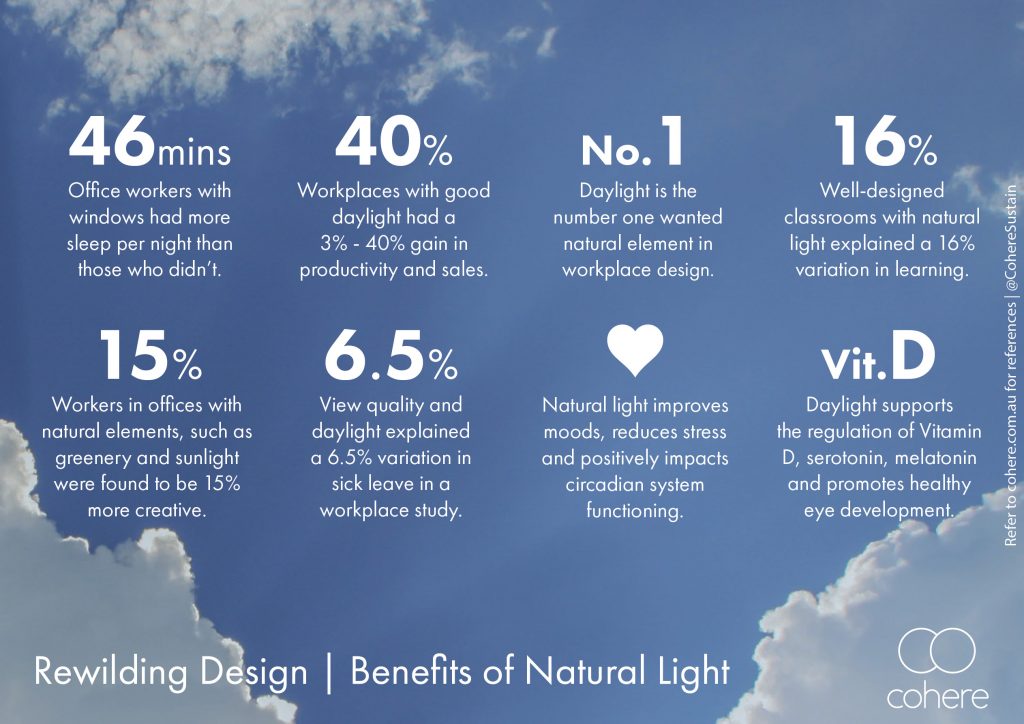
Natural Light Makes Workers More Productive And Creative
Have you ever noticed how your body can mimic the lighting in your office? It’s not referred to as “mood lighting” for nothing. A dimly lit room is not inspiring. It doesn’t make workers energetic, instead it makes them want to relax. You might as well tell your staff to return home because not a lot can be accomplished when workers feel too mellow. Conversely, a brightly lit room filled with artificial light isn’t good for them either! Harsh lighting can make it difficult for eyes to focus, causing eyestrain and headaches.
The best alternative to dim lighting and harsh lighting is natural light itself!

In recent years, research has focused on the wider effects that office lighting has on employees, such as productivity and creativity. Researchers at Northwestern University have presented their findings regarding the impact of working in a windowless room. Their study illustrated a strong relationship between daylight in the workplace and productivity. Increased exposure to natural light in offices has been linked to happier workers with less absenteeism and sick days. Plus, it shows a much higher employee satisfaction and productivity.
What happens when employees have access to natural light?
Natural light is not only inviting but it makes for a better employee in the office. Research has found that when workers receive more natural light from windows they are more productive, happier and less stressed. Another study published in The Responsible Workplace indicated that windows were the number one determinate for employee satisfaction. Natural light affects the body in two ways. One, it allows eyes to see computer screens and other documents without that horrible glare. And two, it directly affects our moods and behaviors; which directly affects productivity.
What happens when employees have access to only artificial light?
Those who only had access to artificial light reported sleep disturbances, anxiety, and fatigue. Furthermore, the high risk of headaches and migraines associated with artificial lighting makes for a bad business investment. The time lost due to employee fatigue and illness, made worse by poor lighting conditions, equals a loss in productivity.
How can office design help with natural light?
If your building is “window-challenged”, there are still some practical things a business can do to capitalize on natural light. Operationally, if there are limits to the number of windows available to your organization, rotating seating is an option. Giving every employee some time in front of the window. Walking meetings is another. This places emphasis on employee wellness while allowing them to get their daily Vitamin D.
ROSI Office Systems’ designers have a keen eye for architectural and office design strategies to help businesses improve their natural light distribution. From office furniture layouts to positioning of shared spaces, there is a wide range of opportunities for increasing daylight. Getting daylight distribution right can make a big difference between workplaces who are brimming with creativity, productivity and wellbeing and those who are not.
Need our help? We’re ready! Contact ROSI Office Systems for a free consultation, today!
Related Blogs: Biophilic Design, A Windowless Workplace

John Ofield is a recognized expert in the office furniture and office cubicle industry, with over 40 years of experience. As the founder of ROSI Office Systems, he specializes in space planning, custom cubicle designs, and high-quality commercial furniture. John’s expertise helps businesses enhance productivity and collaboration. He is also dedicated to mentoring entrepreneurs and redefining workspaces to inspire success.


